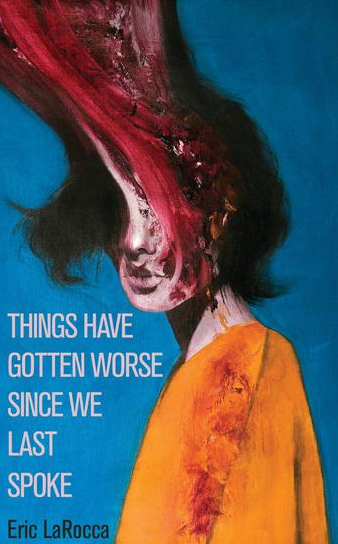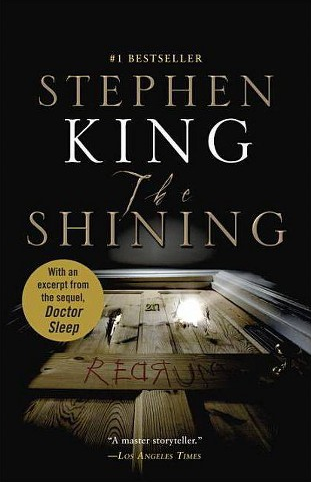Three Tips for Finding Your Audience as a Horror Writer
- Kassie Bohannon

- Apr 7, 2024
- 6 min read

In which I talk about the intersection of horror writing, audience, genre, and Five Nights at Freddy’s.
They’re Out There Now…Watching…Waiting
One thing I’ve always struggled with is imagining the person (or ideally, people) picking up my book once it’s finally finished. What are they looking for? Why should they care about my story? How can I entertain them in such a startling way that they’ll convince others to try it out, as well?
I’m not the only one who feels this way. Many authors find it really challenging to find the delicate balance between writing for art and audience. Lean too much into audience and you risk alienating readers with stiff, impersonal prose that lacks the fire of artistic expression. Lean too much into art and you may end up with a polarizing story that’s so individual, people don’t resonate with the narrative.
Luckily for horror writers, their audience is typically open to some pretty drastic stuff. House of Leaves, for example, is a massive tome that plays with composition and narrative in a dense and complex way — and it’s rightly lauded as a masterpiece. Things Have Gotten Worse Since We Last Spoke, on the other hand, is a fever dream novella with seriously gross content, and it was one of the most viral horror titles of 2021.
Horror is the perfect playground for writers who want to tell weird, disturbing, or just plain strange stories — because horror audiences want to read them.
Still, there are boundaries that you should at least think about when you’re writing horror —and many of them tie back to your audience. Things like:
Genre expectations
Age groups and explicit content
Extended narratives
As someone who wants to simultaneously please my audience and also hide from them forever, I’ve put together some tips that have helped me keep writing. So, here you go.
Tip 1: Remember Your Genre
Readers gravitate towards genres because they follow the same structure, plot elements, and character arcs with creative interpretation that keeps it fresh and familiar. That creative interpretation is where you, the writer, come in. Combined with a bit of luck, your voice can convince a reader to choose your story over the mountain of literature dominating bookstore shelves.
But what does that balance look like? And how can you find your own style in a genre as vast as horror writing?
Let’s break this down with a quick comparison between two books: The Terror and Our Wives Under the Sea.

The Terror
This novel by Dan Simmons recounts the failed expedition of the HMS Erebus and the HMS Terror, two ships setting out and becoming stranded in the mid-1800s. The crew battles their own humanity — and they also battle a monster too I guess.
The Terror is a horror novel. But I (and many others) would also call it historical fiction. Simmons takes the greater context of the 1850s into account when telling this tale, and he addresses multiple perspectives to create a holistic plot that feels airtight. Unlike, you know, the boats.

Our Wives Under the Sea
This novel by Julia Armfield explores the stages of grief as a woman copes with the strange behaviors of her wife after she returns from a submarine expedition. It’s a domestic, slow-burn novel that’s as poignant as it is frightening.
I’d call Our Wives gothic horror, though you could also argue it’s science fiction. Armfield tells a strong, yet heartbreaking, story that feels haunting, lonely, and uncomfortably realistic all at once. Which is really commendable, considering the secret submarine society.
Put ‘Em Together
I bring these titles up because they both live in the horror genre, but the stories couldn’t be more unique from each other. The Terror understands that historical fiction is dominated by a fact-driven approach that immerses readers in a specific point in time. Our Wives, on the other hand, leans into the loneliness and confusion of grief to tell a timeless love story.
When you’re writing horror, think about that intersection between audience and genre. Think about appealing to readers’ expectations to draw them in — then think about surprises that will set your story apart. It’s not easy, but it’s often worth it.
Tip 2: Frighten Responsibly
Horror deals with some of the most difficult elements of humanity. Here are some examples:
Capitalistic greed in It Looks Like Us
Violent transphobia in Tell Me I’m Worthless
Alcoholism and familial abuse in The Shining
Depression and mental illness in I’m Thinking of Ending Things
Despite a variety of release dates and a serious variation in content, all of these novels approach really complex problems. There’s no easy way to deal with transphobia, so Alison Rumfitt doesn’t make it easy. Alcoholism can be devastating for people suffering from it, and the people they love, so Stephen King makes it devastating. Depression is complex and cerebral, which is exactly how Iain Reid portrays it. These are undeniably mature topics for mature audiences.
But so are the far-reaching effects of capitalistic greed — so why didn’t I mention it before? Because It Looks Like Us by Alison Ames is different from the other examples in one key way: It’s a YA novel.
I love It Looks Like Us because it’s a perfect example of how to handle the complexities of horror writing with audience in mind. As a spiritual adaptation of The Thing, It Looks Like Us follows a group of teenagers to Antarctica for a scholarship-adjacent experience where they run for their lives from a flesh-eating monster. This book has it all: trauma, mental illness, a billionaire villain, body horror, and serious suspense. But despite all this, the story is still YA, and it’s still appropriate for that age group.
As writers, we have a responsibility to the people who purchase and read our work. It might be a hot take, but I think we probably shouldn’t unnecessarily traumatize teenagers with extremely detailed recounts of assault. We also shouldn’t infantilize problems like addiction or suicide, especially for mature readers who can handle a heavier narrative.
If you’re writing horror, it’s a good idea to identify the key issue you want to address in your narrative, think about the readers who will interact with it, and then take an educated guess about the lasting impact your story will have on them. If you think your audience can handle it, get a second opinion. Frightening your audience is a good thing — but for their sake, try to do it responsibly.
Tip 3: Play (or Don’t Play) with Extended Narrative
I’m going to alienate a lot of you when I say this. But we have to talk about Five Nights at Freddy’s.
FNAF redefined the horror video game genre, but it didn’t stop there. The meandering and jaw-droppingly complex plot has extended past games into books as well. This might sound daunting to uninitiated audiences, but creator Scott Cawthon knows that FNAF lovers are hungry for something specific and elusive, something that drives them to examine every screenshot, chapter, and illustration with a magnifying glass. They’re hungry for the lore.
I’m going to stop talking about FNAF now so you can stop yelling at me. But there’s something to be said about this extended narrative style, especially in horror. Hiding the overarching plot behind other stories or in seemingly straightforward lines of dialogue is deeply engaging. There’s a feeling of pride associated with discovering and piecing together the story on your own. There’s also a sense of dread and uncertainty as you search for clues, wondering what the true plot really is.
While this seems to resonate with younger audiences, lore hunting certainly didn’t start with FNAF. Look at House of Leaves, the Marble Hornets Slenderman series, and even The Blair Witch Project. Engaging your audience with a complex narrative that equips them with their own detective hat can be really impressive — and leave a big impact. And playing with suspension of disbelief can be all the more thrilling.
But this storytelling method can also be a massive undertaking that takes years to get right. Weaving together plot threads, seasoning stories with clues, and creating a backlog of expanded universe texts isn’t something you can do overnight. Not to mention, a lot of horror readers won’t resonate with this very specific style.
That’s why it’s important to choose and know your audience early on. Think about the content of your story, how you want people to glean messages from it, and choose the format that you think they’ll engage with the most. Maybe it’s an eleven-book series about fifteen different characters, or maybe it’s a one-off novella about a single person.
Hurry! They’re Coming in Through the Window!
Whether the audience feedback ends up being great or downright terrifying, it’s still a good idea to think about the greater context that your book will live in while you’re writing. Consider your responsibility as a writer and the people who will read your work. Sure, it’s your story. But once you publish it, it’s theirs, too.

Did you enjoy these insights? Did you find my use of keywords helpful instead of deceptive? If so, you should share this post with all your best friends on social media using the handy tool below! I’m a professional copywriter with a love of all things horror. Please do not give me any feedback or I will throw up on my keyboard.





















Comments